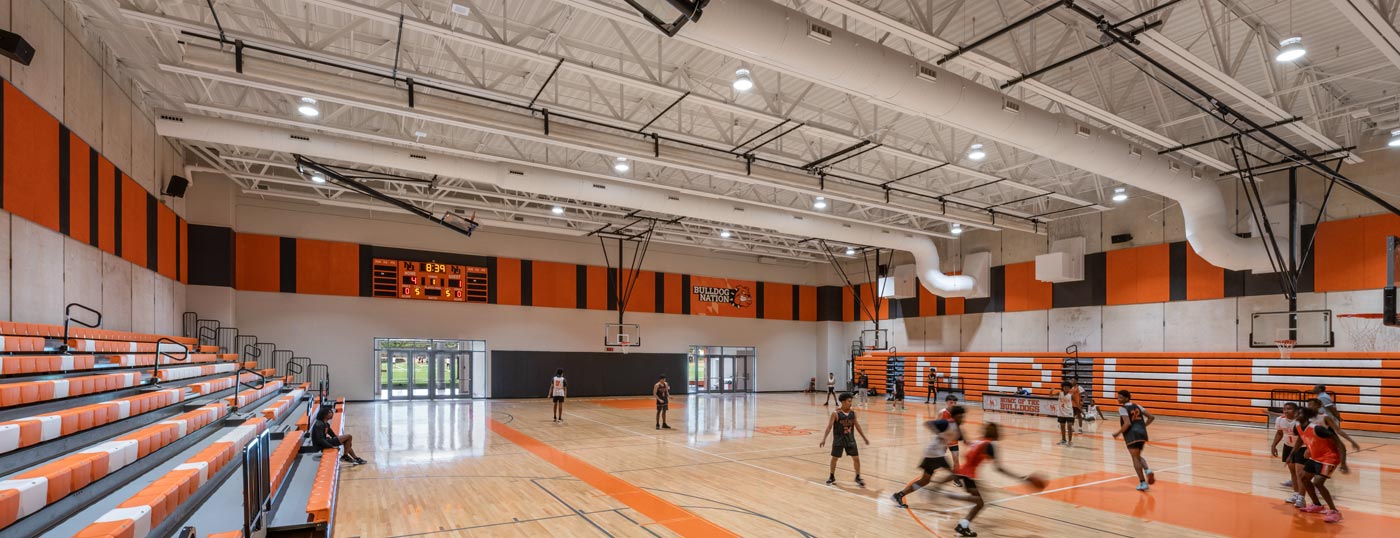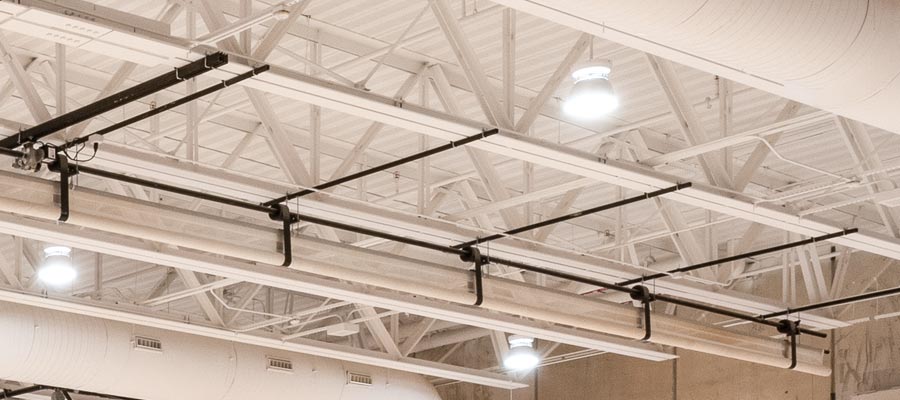
Storm shelters are necessities that can account 10 to 20 percent of a project’s budget. Composite joist and deck solutions can turn these structures into cost-effective multipurpose facilities.
Storm shelters are the superheroes every community needs – they’re there when you need them most, yet you hope you never have to sound that alarm.
But with great power comes great responsibility – and potentially significant cost. A storm shelter must be able to withstand 250 mph winds and 100 mph projectiles. Its design and construction also cannot break the budget – a difficult task when a storm shelter can account for 20 percent of a project’s cost.
Engineers and architects throughout the United States have developed creative solutions to this problem. The growing trend is to design storm shelters as fully functional structures like gymnasiums, community centers, and commercial spaces.
Composite joist and deck solutions from New Millennium can help create storm shelters with year-round functionality.
New Millennium collaborated on this solution with Ponce-Fuess Engineering, LLC, for an addition to North Dallas High School, in Dallas, Texas. The new gymnasium doubles as a storm shelter, thanks to its innovative design and use of composite joists and deck. The structure is ICC 500 compliant, which means it’s been engineered to withstand wind speeds of up to 250 miles per hour, and 100 psf of live load.

New Millennium supplied the massive 82-inch-deep composite joists that span an impressive 116 feet and are topped with a composite cellular acoustical deck.
The United States is experiencing its worst tornado season in 14 years. As of the end of June 2025, the U.S. was 386 tornado reports above historical average for this time of year. Texas, Illinois, Missouri, and Mississippi have been hit the hardest, accounting for 493 of the 1,296 reports through June 29.
The call for storm shelters in the United States intensified after historically destructive tornadoes touched down in Alabama in 2011 and in Moore, Oklahoma, in 2013. In 2015, the International Building Code (IBC) responded by mandating all new structures in Tornado Alley with 50 or more occupants – as well as emergency operation facilities like 911 call stations and fire, rescue, ambulance, and police stations – have standalone storm shelters in compliance with ICC 500.
And FEMA will reimburse up to 75 percent of the eligible costs of storm shelter projects.
As long as there have been tornadoes, there has been a need for storm shelters. According to Alex Therien, Market Development Manager at New Millennium, there are three generations of storm shelter design:

North Dallas HS gymnasium/storm shelter addition
Gymnasiums like North Dallas High School are a perfect “disguise” for storm shelters since they are large spaces that can hold more than 50 people at any given time. Taking the additional steps to make them sturdier to comply with ICC 500 just makes sense.
“Given their size, gymnasiums are a natural place to take what’s already a large area and then reinforce it to make it stouter than what it was going to be,” said Joe Voigt, Marketing and Business Development Manager at New Millennium.
Composite joists play a huge role in the construction of storm shelters. These joists create a stronger, stiffer, lighter, and less expensive steel structure compared to other structural steel frame approaches. Considering all the benefits, a composite joist and deck solution from New Millennium is ideal for storm shelters.
Composite joists are designed to work together with the overlying concrete slab as a single load-bearing unit. The two components are connected using field-installed shear studs that are welded through the composite steel deck to the joist’s top chord. Once the concrete is poured and cured, the studs become embedded in the slab, creating full composite action between the joist and the slab.
Because the concrete slab contributes to the structural capacity, the joist top chord can be smaller than that of a comparable non-composite joist. This reduces the amount of steel required while still meeting design loads. Composite joists can also be spaced farther apart, further reducing steel tonnage, manufacturing effort, shipping weight, and erection time.
In the case of North Dallas High School, massive 82-inch-deep composite joists span an impressive 116 feet and are topped with a composite cellular acoustical deck.
An 8-inch-thick concrete slab on 2-inch composite deck resists uplift from tornado winds and protects against debris damage. Per ICC 303, the roof live load must withstand 100 pounds per square foot for tornado shelters. This combination creates a room that can withstand a tornado.
New Millennium offers multiple composite deck profiles available in 1.5, 2.0, and 3.0 inches with cellular and cellular acoustical options. Cover widths range from 24 to 37.5 inches, depending on the profile selected.
The roofing system is just one component of a storm shelter that must meet ICC 500 standards. FEMA lists all the standards and codes, guidance, mandates, and regulations storm shelters must adhere to:
The structure also has egress through an alcove that allows occupants to get outside for some natural ventilation in case the doors are blocked off by storm-related debris.
Storm shelters aren’t the superheroes communities want, but they are the ones communities need. When designed as multipurpose structures, they keep citizens safe, project budgets intact, and provide functionality year-round.

Industry perceptions can at times shield the obvious upsides of a particular steel building product. When it comes to designing high-performance floor systems, using wide-flange beams has been the norm. Take a deeper look and you’ll see using steel floor joists with Flush-Frame Connections from New Millennium is often a better way to go.

There’s no question artificial intelligence (AI) is the main attraction of next generation technology. Naturally, AI is also the primary driver of data center demand. Add in cloud computing, telecommunications, security, and other vital aspects of IT infrastructure and, clearly, data centers are only becoming more essential across industries.
Building a better steel experience